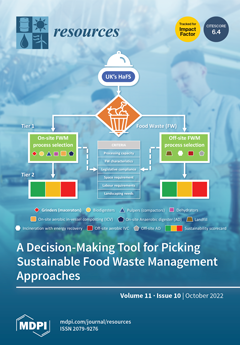Landscape harmony is a key factor in the application of nature-based solutions to provide green areas. The search for plants that meet this requirement is crucial in this context. We evaluated the adaptation, resistance, and performance of
Polygonum acuminatum and
Ludwigia lagunae,
[...] Read more.
Landscape harmony is a key factor in the application of nature-based solutions to provide green areas. The search for plants that meet this requirement is crucial in this context. We evaluated the adaptation, resistance, and performance of
Polygonum acuminatum and
Ludwigia lagunae, macrophytes from the Pantanal biome, in greywater-fed mesocosms simulating zero-liquid discharge systems. Four irrigation solutions were tested for 212 d. Neither species exhibited stress conditions in the adaptation phase, with photosynthetic activity (
Fv/
Fm) close to that obtained in Pantanal. However, over time, the mesocosms irrigated with greywater (GW) without nutrient supplementation exhibited stress according to correlation analyses of photosystem PSII and physicochemical parameters;
L. lagunae for dissolved oxygen below 3 mg L
−1 and
P. acuminatum for water temperatures above 27 °C. Supplementation of GW with nutrients resulted in good growth and performance. Both species were able to receive high chemical oxygen demand (COD) loads, averaging 34 g m
−2 day
−1 for
L. lagunae and 11 g m
−2 day
−1 for
P. acuminatum, with an average removal of 85% by both.
L. lagunae had better evapotranspiration capacity, with greater potential for use in cooling islands, whereas
P. acuminatum showed a more resistant metabolism without nutrient supplementation.
Full article





